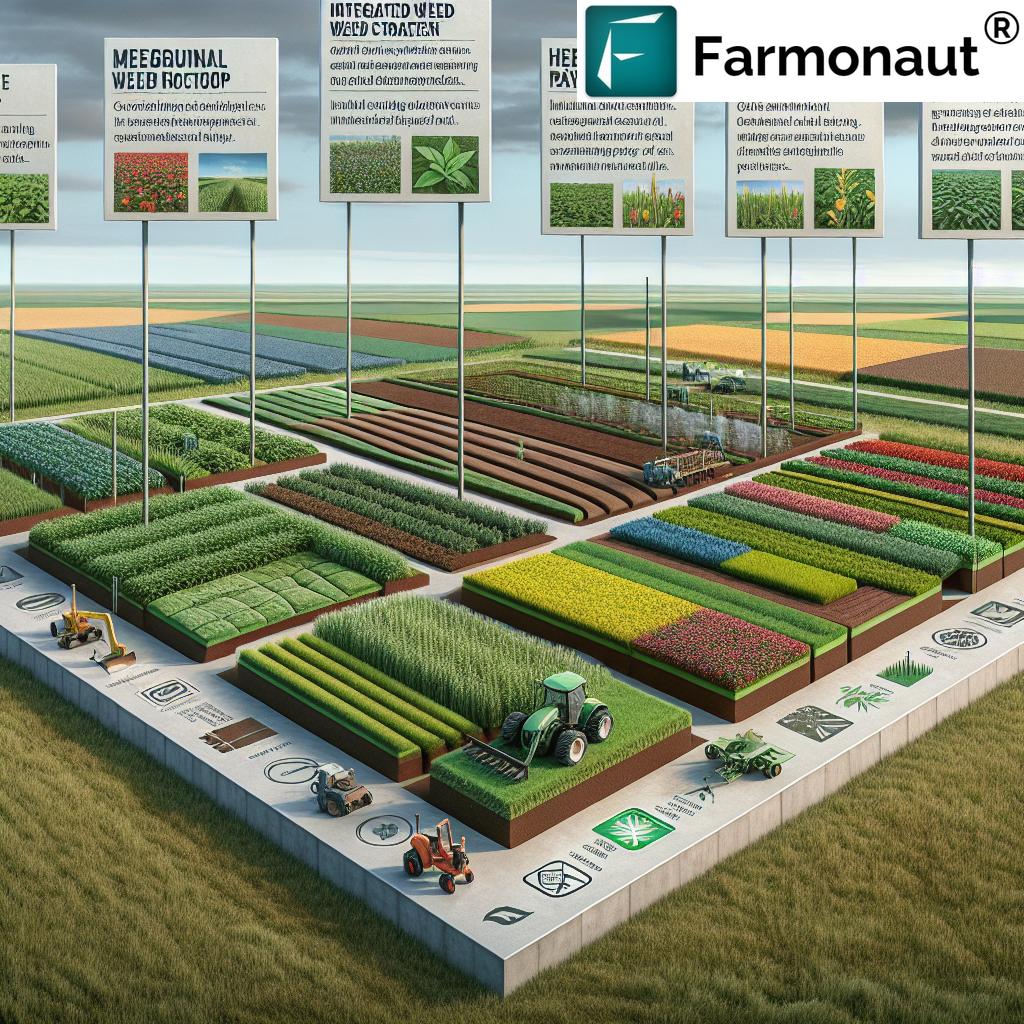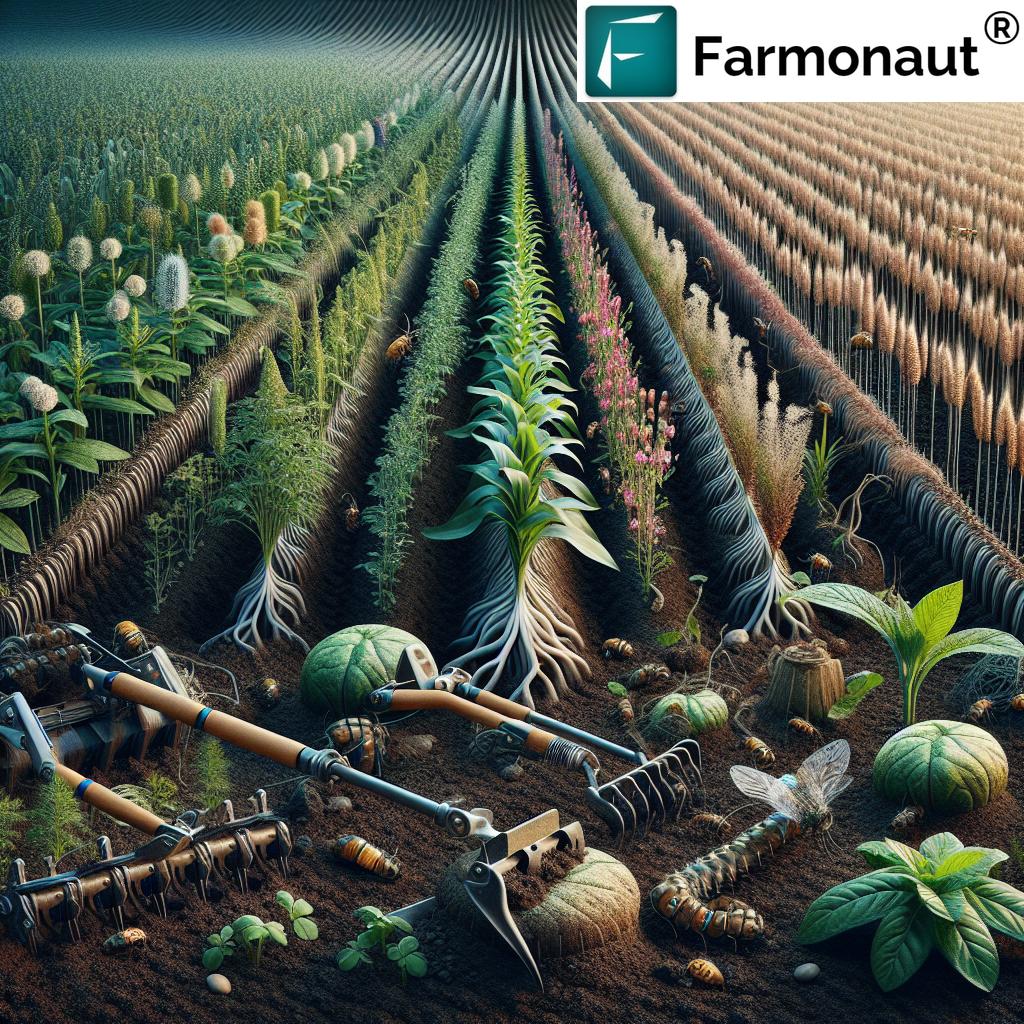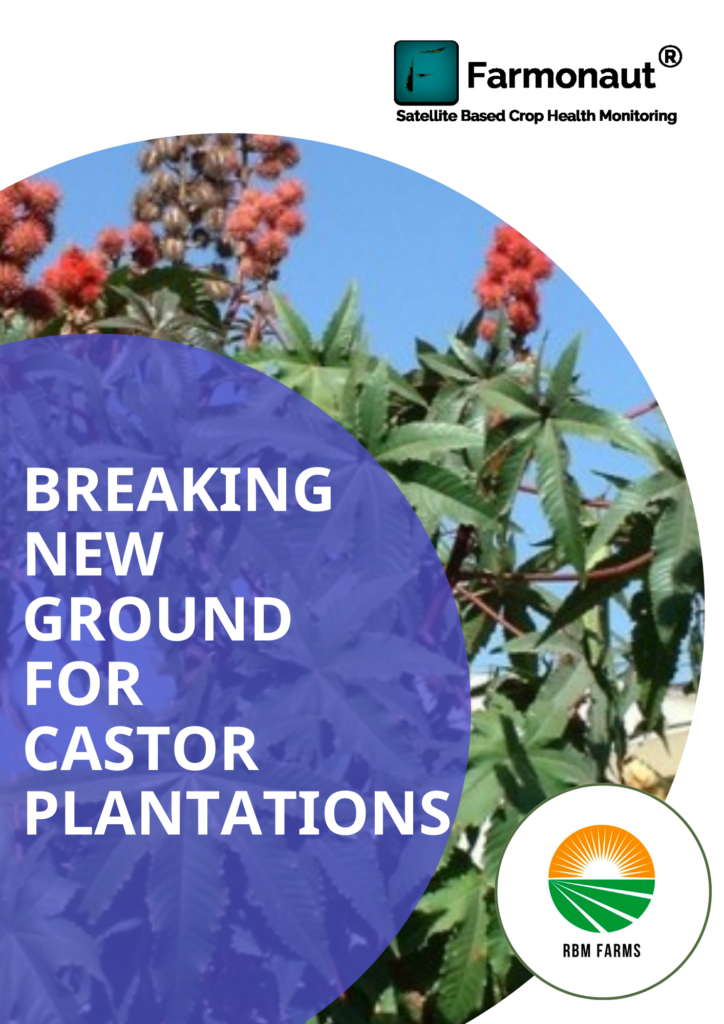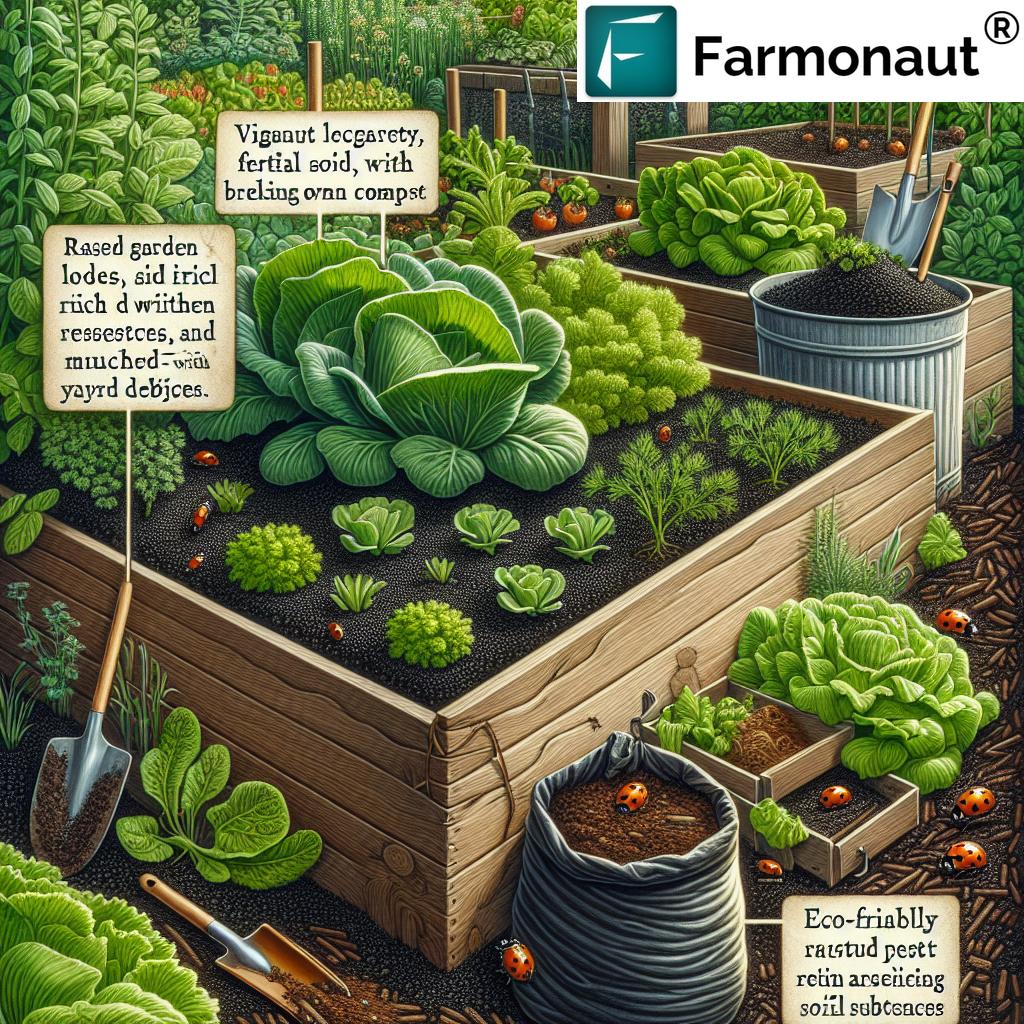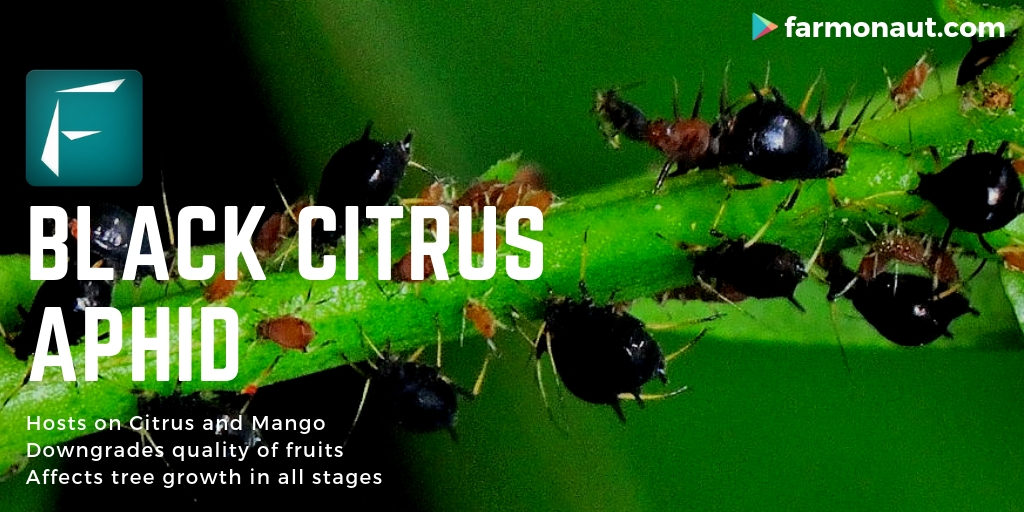Integrated Weed Management: 7 Sustainable Strategies
“Over 70% of farmers using integrated weed management report improved soil health and reduced chemical herbicide use.”
As farmers and agricultural professionals, we face increasing challenges from weeds, which threaten both our crop yields and the long-term sustainability of our soil. Integrated weed management (IWM) has emerged as a comprehensive approach to sustainable weed control, allowing us to balance weed suppression with ecological and economic responsibility.
By combining chemical, biological, cultural, and mechanical methods, we minimize risks associated with traditional weed control practices, protect soil health, and help our crops thrive. In this in-depth guide, we’ll explore the core principles of integrated weed management, break down the components of IWM, and detail seven sustainable weed management strategies that are practical, effective, and environmentally sound.
What is Integrated Weed Management?
Integrated weed management (IWM) is a holistic, sustainable approach that seeks to control weeds by combining multiple weed control methods instead of relying solely on one practice (like chemical herbicides). Our integrated approach to weed management acknowledges the complexity of weed populations, the risks associated with overusing herbicides (such as resistance and environmental harm), and the need for diverse strategies to build resilient, productive farming systems.
Weeds compete with crops for water, light, and nutrients, and can harbor pests and diseases. Left unchecked, they lower our yields, increase production costs, and compromise the health of our land. The goal of IWM is not to eradicate all weeds but to manage weed populations effectively, minimize negative impacts, and enhance our cropping system’s sustainability.
Principles of Integrated Weed Management
Our implementation of integrated weed management is firmly anchored in several key principles that collectively provide a framework for sustainable, eco-friendly, and effective weed control practices:
-
Suppression of Weed Growth:
- We adopt practices that hinder weed development, such as promoting competitive crops, increasing ground cover, and optimizing planting density and timing.
-
Prevention of Weed Seed Production:
- We utilize strategies to prevent weeds from producing seeds, which includes timely weeding, crop rotation, and preventing weeds from reaching maturity.
-
Reduction of the Weed Seed Bank:
- By decreasing the number of viable weed seeds in the soil, future infestations are minimized. This involves consistent weed management over multiple seasons.
-
Prevention of Weed Spread:
- We implement measures to stop weeds from moving to new areas—including cleaning equipment and tools to avoid weed seed dispersal.
Core Components of Integrated Weed Management
To successfully control weed populations and promote sustainable farming, IWM utilizes a synergistic combination of techniques. Each component targets weeds at different stages of their lifecycle and supports ecological balance in our fields.
- Cultural Practices for Weed Management: We increase crop competitiveness using techniques like crop rotation, intercropping, timely planting, and cover cropping (see strategies below).
- Mechanical Weed Removal Methods: Methods like tillage, mowing, and hand weeding directly remove or destroy weeds, with minimal reliance on chemicals.
- Biological Control: We utilize natural predators, pathogens, or competitors that suppress weed growth, offering an eco-friendly method in our management toolbox.
- Chemical Control: When necessary, we use herbicides judiciously, selecting products with varied modes of action to reduce herbicide resistance and environmental impacts.
- Technological & Data-Driven Support: Modern solutions, such as satellite-based field mapping (Farmonaut’s Agro Admin App), enhance timely decision-making and targeted control.
By integrating these methods, we develop weed management strategies that are not only effective but promote sustainability and minimize health, economic, and environmental risks.
“Seven sustainable strategies in IWM can increase crop yields by up to 20% while protecting the environment.”
Integrated Weed Management: 7 Sustainable Strategies
For best results, we recommend implementing a combination of the following seven sustainable weed management strategies. Each method addresses weeds in a unique way, supporting overall crop health, reducing environmental impacts, and ensuring the longevity of our weed control efforts.
1. Crop Rotation for Weed Suppression
Crop rotation involves changing the type of crop grown in a field from one season to the next. This disrupts weed life cycles and lowers the adaptation potential of weeds to any single crop environment.
- For example, rotating cereals with legumes interrupts the growth and reproduction of crop-specific weeds.
- Cover crops in a rotation can further suppress weed germination and growth.
2. Mulching
By covering the soil with organic materials (like straw, leaves, or biodegradable mats), we create a physical barrier that hinders weed development and reduces the light available for weed germination.
- Mulching is especially useful for high-value vegetable crops and orchards.
- It also improves soil moisture and adds organic matter to the soil.
3. Manual and Mechanical Weed Removal Methods
Directly removing weeds by hand or with mechanical tools is a reliable strategy—especially in the early growth stages or for spot management in sensitive crops.
- Common tools include hoes, weeders, and specialized tillage implements.
- Periodic mowing in non-crop zones prevents weed seed production and spread.
4. Biological Control
We harness the power of nature by introducing natural predators, competitive plants, or weed-specific pathogens to suppress problematic weeds.
- Inoculating fields with certain fungi can target specific weed species.
- Releasing weed-eating insects further disrupts weed growth cycles.
5. Cover Cropping
Cover crops such as rye, clover, or vetch are grown to outcompete weeds for space and resources. Their dense canopies block sunlight, smother emerging weeds, and disrupt seed bank replenishment.
- Cover cropping also improves soil structure and nutrient cycling.
- This strategy is effective in both annual and perennial crop systems.
6. Judicious Herbicide Use
Chemical control, when used carefully and selectively, is valuable for managing persistent or large-scale weed problems. Judicious herbicide use should follow these best practices:
- Alternate between products with different modes of action to minimize resistance risk.
- Integrate with non-chemical methods to reduce overall herbicide input.
- Apply for spot control rather than blanket applications to lower environmental impact.
7. Precision Mapping and Digital Support
Technologies like satellite imagery, AI advisory systems, and digital field mapping allow us to target weed control measures more accurately than ever before.
- Data-driven decisions reduce wasteful chemical use, identify weed hotspots, and track the success of management strategies.
- Platforms such as Farmonaut’s Large Scale Farm Management tools offer these capabilities with affordability and ease of use.
Comparative Table of Weed Management Strategies & Benefits
To facilitate quick comparison and informed decision-making, our table below summarizes the seven key weed management strategies, their impacts, ecosystem benefits, and crop suitability. Each strategy is a vital element of integrated weed management—and their combination yields the best results.
| Strategy Name | Description | Estimated Impact on Weed Reduction (%) | Environmental Benefit | Suitability for Crop Types |
|---|---|---|---|---|
| Crop Rotation for Weed Suppression | Changing crops regularly to disrupt weed lifecycles and reduce adaptation | 40-60% | Improves soil health, breaks pest cycles | Grains, legumes, cereals, vegetables |
| Mulching | Application of organic or inorganic cover to block weed emergence | 30-50% | Reduces water loss; increases soil organic matter | Orchards, vegetable, horticultural crops |
| Manual & Mechanical Removal | Physical removal using tools, machinery, hand weeding, or tillage | 40-70% | Reduces chemical input; preserves beneficial microbes | Field crops, fruit plantations, vegetables |
| Biological Control | Using living organisms (predators, fungi, insects, competitive plants) | 15-40% | Enhances biodiversity; minimal environmental impact | Organic fields, sensitive & specialty crops |
| Cover Cropping | Growing non-cash crops off-season to outcompete weeds | 35-60% | Improves soil fertility, prevents erosion | Cereals, rotation systems, legumes |
| Judicious Herbicide Use | Selective application of chemical herbicides in rotation and targeted doses | 30-80% | Reduces chemical runoff, manages resistance | All major field, cash, and plantation crops |
| Precision Mapping & Digital Support | Utilizes satellite mapping, AI advisories, and tech to optimize interventions | 10-40%, synergistic with other methods | Reduces resource wastage; supports smart, sustainable farming | All farms, especially large-scale and diversified operations |
Leveraging Technology in Sustainable Weed Control
Digital tools amplify our integrated weed management strategies. At Farmonaut, we provide advanced, satellite-based crop health monitoring that helps us track
vegetation vigor, identify weed problems early, and optimize our interventions for maximum impact and cost savings.
- Satellite-Based Crop Monitoring: Use real-time field mapping and satellite imagery to spot weed-infested patches and optimize our control actions.
- AI-Based Advisory: Leverage AI-driven advice through the Farmonaut app to make informed decisions about herbicide application, manual weeding times, and crop rotation schedules.
- Blockchain for Traceability: Use blockchain-based traceability to document sustainable weed control practices for supply chain transparency, meeting consumer and regulatory expectations.
- Resource Management: Optimize equipment and input use with fleet management solutions, which help us minimize unnecessary trips and reduce overall costs.
- Carbon Footprinting: Track and reduce our climate impact with carbon footprinting tools, aligning weed management with broader sustainability goals.
- Financing Support: Simplify loan and insurance processes for our farms using satellite-based verification services. This ensures that our sustainable practices improve access to critical funding.
API Access: Integrate satellite and weather data seamlessly with our own apps or dashboards using the Farmonaut API. Developers can get started by reviewing our API Developer Docs.
Key Benefits of Integrated Weed Management
-
Reduced Herbicide Use:
- By integrating chemical and biological weed control with other methods, we significantly decrease our reliance on herbicides. This reduces chemical residues in soil and water, protects beneficial organisms, and mitigates the development of herbicide-resistant weeds.
-
Enhanced Crop Yields and Quality:
- Effective weed control means our crops have better access to water, nutrients, and light, maximizing both yield and crop value.
-
Sustainable Farming Systems:
- IWM promotes ecological balance, supports biodiversity, and strengthens soil health—ensuring the viability of our farmland for many generations.
-
Flexibility and Adaptability:
- A diverse mix of weed management strategies makes us resilient to new weed species, climate variability, and evolving agricultural challenges.
-
Cost Effectiveness:
- Reducing herbicide use and targeting interventions lowers long-term costs while supporting premium certifications (such as organic or low-input labels).
-
Supports Regulatory Compliance and Market Access:
- Sustainable weed control practices align us with an increasing number of government standards and consumer expectations regarding environmental stewardship (Farmonaut Product Traceability).
Challenges & Considerations in IWM Adoption
While the benefits of integrated weed management are extensive, successful implementation does require addressing several challenges:
- Knowledge and Training: Our teams and fellow farmers need proper education on diverse IWM techniques and the timing of interventions. Extension agencies, digital tools, and on-field demonstrations can facilitate this transition.
- Economic Barriers: Investments may be necessary for new equipment (e.g., for mechanical control or satellite mapping). While there may be initial costs, long-term savings and yield benefits often offset these, especially with scalable, cost-effective platforms like Farmonaut.
- Management Complexity: Coordinating a mix of cultural, biological, physical, and chemical measures can seem daunting. Digital solutions and advisory systems greatly simplify planning and real-time monitoring, helping us track the effectiveness of our IWM program.
Fortunately, the Farmonaut app and platform can support us every step of the way with tailored recommendations, detailed mapping, and intuitive dashboards. This ensures our integrated approach remains both sustainable and practical for farms of any size.
Frequently Asked Questions (FAQ) on Integrated Weed Management
What is integrated weed management (IWM)?
IWM is a holistic strategy for controlling weed populations using a combination of cultural, mechanical, biological, and chemical methods. It aims to minimize reliance on herbicides, reduce environmental risks, and promote sustainable agriculture.
Why should we use multiple weed management strategies?
Combining different strategies disrupts weed life cycles, reduces the risk of herbicide resistance, and provides more consistent weed control. This integrated approach ensures better crop yields and supports sustainable, resilient farming systems.
How does crop rotation help suppress weeds?
Changing crops each season disrupts the life cycles of crop-specific weeds and reduces the weed seed bank. This makes it harder for any one weed species to dominate and helps manage overall weed pressure.
Can technology like Farmonaut help with weed management?
Yes! Farmonaut’s satellite-based crop monitoring, AI advisories, blockchain traceability, and resource management tools help us target interventions, track results, and optimize input use for more effective and sustainable weed control.
Is biological control always safe and effective?
While biological control can be highly effective and eco-friendly, it must be carefully selected and monitored to ensure intended impact and avoid unintended harm to non-target species. It is most powerful when integrated with other methods.
How can we minimize chemical herbicide use without decreasing productivity?
By integrating cultural, biological, and mechanical strategies, and using precision mapping to target herbicide applications only where needed, we can maintain high productivity while substantially lowering chemical usage.
What are common mistakes to avoid in IWM?
Over-reliance on any single method (such as repeated herbicide application), neglecting weed monitoring, or missing key intervention timings can reduce the effectiveness of IWM. Robust planning, monitoring, and adjustment are essential for success.
Conclusion: The Future of Sustainable Weed Management
Integrated weed management embodies the principles of modern, sustainable agriculture. By combining weed control practices—from crop rotation to mechanical methods, mulching, biological approaches, judicious herbicide use, and precision mapping—we protect our crops, boost yields, and support the environmental health of our land.
The adoption of digital platforms, such as those offered by Farmonaut, ensures these strategies are actionable, scalable, and continually optimized through data-driven advice, real-time crop monitoring, and resource management. With affordable, accessible technology, every farmer worldwide can join us on the path to resilient, productive, and sustainable farming.
Ready for actionable, affordable IWM and digital farm management? Join Farmonaut’s growing global community:
Explore our carbon footprinting and traceability solutions to further enhance your sustainability journey. Discover Farmonaut’s API or dig into the developer docs if you aim to build custom integrations for your farm or agribusiness systems.
Together, let’s advance sustainable agriculture with integrated weed management and intelligent digital tools—protecting our crops, our soil, and our future.
Looking to revolutionize your farm’s weed management strategies? Download our app or get started in your browser and see real results!



